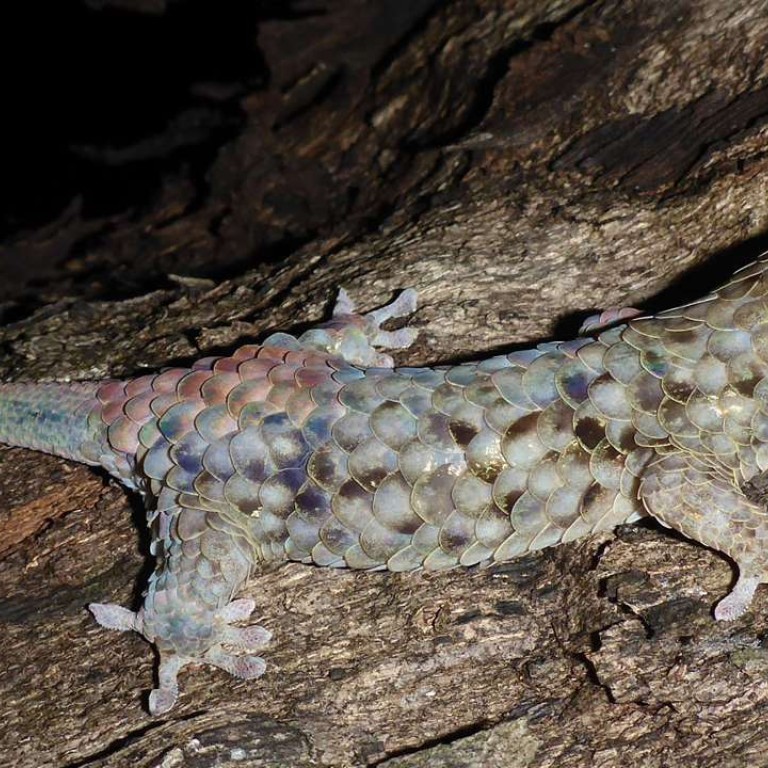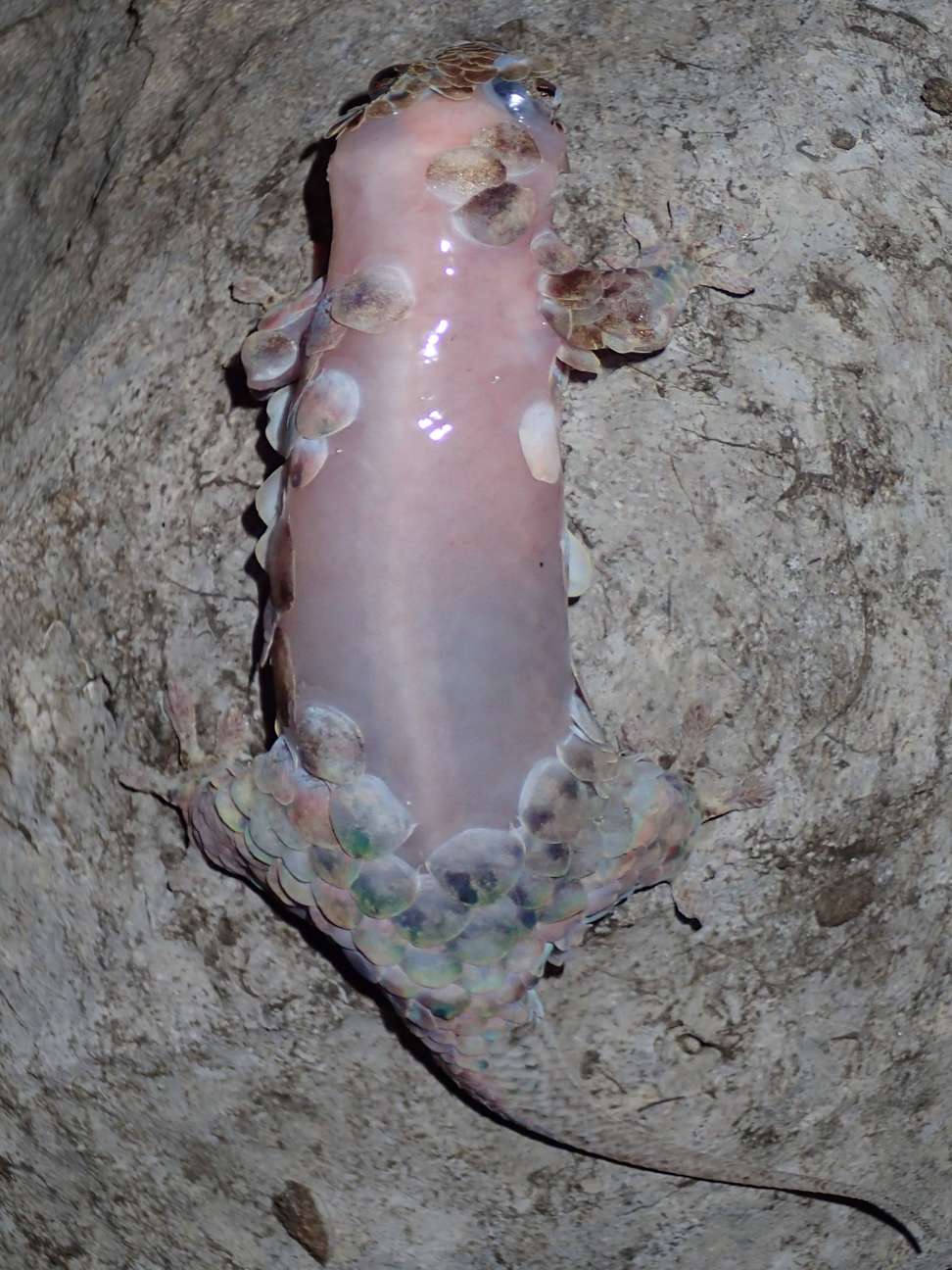
Newly discovered gecko has a disgusting escape trick: it peels off its skin down to the flesh
Lizards are famous for their ability to detach their tails when a predator grabs it, but a newfound species of gecko from Madagascar takes this ability to the extreme.
When a predator goes to take a bite, Geckolepis megalepis peels off its own skin to give its pursuer a mouthful of scales and skin instead.
If you think this sounds gruesome, you don’t know the half of it. G. megalepis is thought to have the largest body scales of any gecko, which means that even a relatively minor scuffle can result in major armour losses. The paper describing the new species, published on Tuesday in the journal PeerJ, includes an image of one of these lizards with nearly every scale removed from its torso. The skin beneath is glistening and pink – like a wet, uncooked chicken breast.

Fortunately for the weird-looking little critters, known as “fish-scale geckos,” their bodies can replace lost scales in a matter of weeks, a remarkable example of rapid and good-as-new regeneration.
“This regeneration is, as far as we have been able to tell, scarless, and the resulting regenerated scales are indistinguishable from original ones,” said Mark Scherz, a herpetologist at the Bavarian State Collection for Zoology in Munich and lead author of the new paper. “That is not the case of many other geckos, in which the regenerated scales have a distinctly different appearance to the original ones.”
The exceptional size of the scales, which sort of make the lizard look as if it’s covered in pinkie fingernails, may contribute to the ease of their removal. Larger scales mean more surface area to get caught on claws and jaws, after all. But it’s also more than that.
Scherz said the deeper layers of the gecko’s skin contains a special kind of cell called myofibroblasts that seem to be able to contract on contact. This loosens the uppermost layers of skin, the subcutaneous fat tissue and scales and allows them to flake off easily. Their skin, in other words, is built to be torn away. The geckos don’t even bleed.
“It is reasonable to infer that this is a good escape strategy, or else it is unlikely to have evolved,” Scherz said.
Scientists have only ever seen this defence mechanism in the wild once – when a larger, nocturnal gecko tried to turn G. megalepis into dinner. After a battle that lasted just 30 seconds, G. megalepis shrugged off some of its armour like you might a robe and then high-tailed it out of the fray.
Despite a lack of observational evidence, we can at least confirm that the scale shedding makes the geckos really, really tough to catch.
“We mostly would have one person hold the bag, while the other chases the lizard into it,” Scherz said. “It’s not easy.”
Scientists want to study animals as they are, of course, with as little human disturbance as possible. A lizard’s scale patterns are so distinctive that they are what Scherz called “the gold standard” for identifying reptile species. But this is easier said than done when you can’t touch an animal without it falling apart like a Christmas tree that’s been left up a few weeks too long.
To solve the problem, the researchers submitted preserved G. megalepis specimens to micro-CT scans. This allowed them to examine the animal’s skeleton, which thankfully is much less fragile.
As with most new species, scientists don’t know a great deal about this tearaway gecko yet. Scherz said they found it in Madagascar’s Ankarana National Park, an area dominated by razor-sharp, limestone karsts and home to little vegetation. Several beautiful and bizarre new species have been discovered in this area recently, including Day-Glo coloured geckos of the Phelsuma genus and “ghost” snakes.
Suffice it to say, more study will be required before we can say we have a true grasp on this species. And even then, it’ll probably just be a clump of scales.

